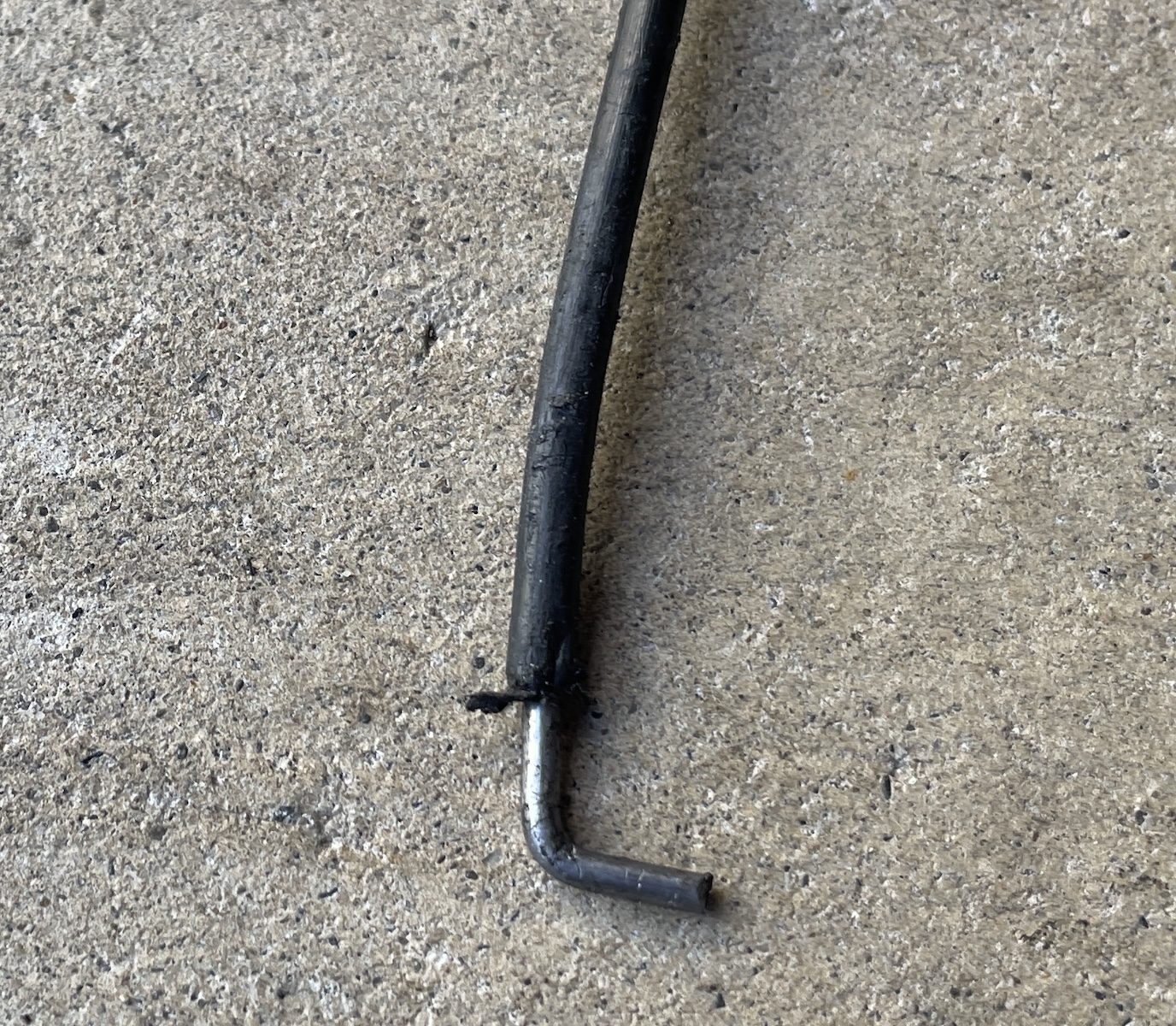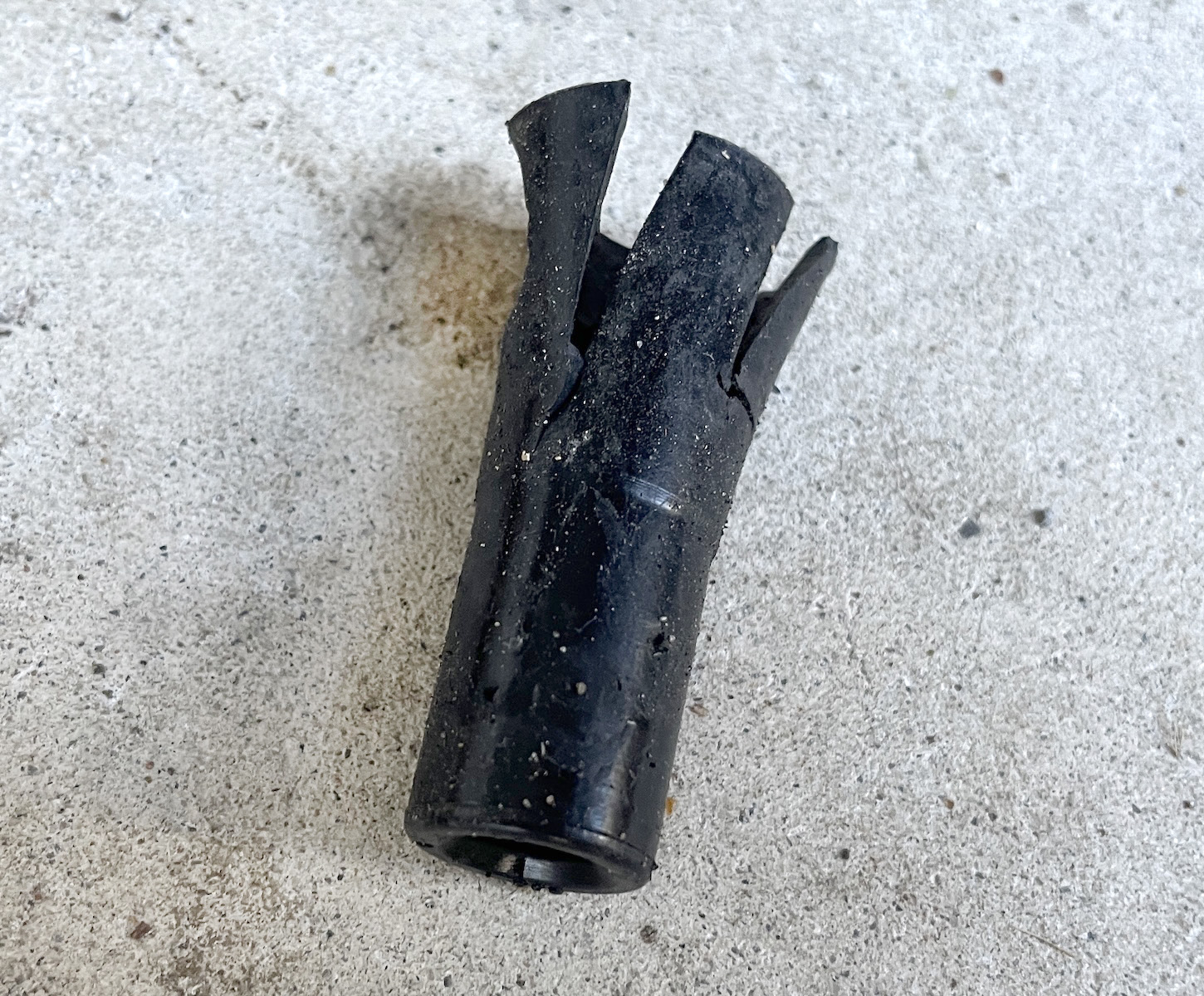It’s amazing how quickly a plan can go a little bit south. Maybe not “my life is completely ruined” south, but certainly southward enough to bring out the compound curse words. I mean, replacing ignition coil packs should be easy. A few bolts, a few connectors, and open sesame, yeah? Well, not always. I recently found myself in a bit of a pickle, and the thing that saved the day was a common household item not normally found anywhere near a garage. Oh yes, it’s coat hanger time.
The other week, I noticed my BMW 335i’s idle wasn’t as steady as it should be. Could it be an air leak? Obscenely expensive fuel injector failure? A physical timing issue? Not exactly. A little bit of datalogging revealed general ignition unhappiness, and given that the spark plugs were replaced less than 25,000 miles ago, my bet was on weak coil packs. Hey, it’s a turbocharged car with more than 146,000 miles on the clock. It’s probably time, right? Since Eldor coils were out of stock locally, I ordered a set of OEM Bosch units and got cracking pretty much as soon as they arrived.
You do have to pull the cowl plastics to access the rear coil packs on a six-cylinder E90 3 Series, but it’s not that bad. A couple of clips, a couple of rubber tabs, six eight-millimeter bolts for the cabin air filter housing, two more for the cowl tray, a couple of Allen bolts for the engine cover, and presto. Indeed, all was going well until cylinder three. Out of general caution, I wiggled the coil pack back and forth, then felt a slight but unusual jolt. Upon removing it from its home, I was treated to this lovely sight. Doesn’t this coil pack look a bit short?

Indeed, the rubber boot that goes around the spark plug and keeps it insulated decided it didn’t want to stay attached to the coil pack itself. It was still down in the bowels of the spark plug well, and that presented a problem. With the boot remnant down there, I couldn’t install a new one. Cue the faffing about. Trying to stick a flathead screwdriver down there to free the boot didn’t quite work, neither did making a few strategic incisions nor gently threading a screw into the rubber boot and attempting to pull the whole thing out. The situation didn’t seem to be going well, until I remembered that I had a coat hanger.

The humble wire coat hanger is legendary for its contributions to bodgery. It can function as an exhaust hanger, Band-Aid together a wiper mechanism, even replace certain springs and cables in a fix that might essentially last the life of a vehicle, assuming the vehicle sucks enough. However, my 335i doesn’t suck, and I’m not thinking that out of arrogance. Any running, driving car with a heater, functional air conditioning, no undue play in the suspension, and no error lights on the dashboard is a good car, and good cars deserve better than bodges. I didn’t reach for a coat hanger as an emergency fix, I reached for one as an emergency tool.
Unsurprisingly, the spark plug wells on an N54 engine are deep. Deeper than the reach of any of my pliers. Deeper than the reach of my picks. What I needed was a really long 90-degree pick, and when you think about it, reasonably stiff wire should make for a pretty decent pick. Not ideal, obviously, but hopefully sufficient for what I needed to do. Plus, it was properly late. All the auto parts stores, hardware stores, and even the liquor stores were closed (this explains why most of the photos here were taken in the daytime post-incident). Time for a Hail Mary.

The plan was simple: Take a section of coat hanger wire, remove the plastic coating from one end to make it thinner, grab a set of locking pliers, and bend just the tip to a 90-degree-ish angle. Then, take the piece of wire, jam it in between the side of the boot and the head until it bottoms out, crank it like Soulja Boy to break the boot free, and pull. It took a few attempts, but by the light of my phone flashlight, I managed to successfully extract the broken boot without breaking something else.

The rest of the procedure was remarkably unremarkable. Old parts out, new parts in, then for the moment of truth. Before putting everything back together, I pressed the start button and the engine whirred into life. Less than half a minute later, after the initial cold start enrichment had run its course, I got my answer: a rock-steady idle. Turns out, new coil packs also fixed a bit of hesitation I was feeling, but I couldn’t have done it without a coat hanger.
Is there a dedicated specialty tool out there designed for this situation? Sure, but a coat hanger did the trick for a price far lower than even a set of 11-inch needle-nose pliers. I’ve seen ten-packs go on sale for less than three dollars. That’s under 30 cents per improvised tool. Work on any car, and it’s probably going to test you. Eventually, you’ll need to be resourceful, and sometimes that means bending a coat hanger to your will.
Top graphic image: Thomas Hundal









“a common household item not normally found anywhere near a garage. ”
I have my overalls, lab coat and warm laying-under-the-car-cursing-in-winter coat all hanging neatly on a wire coat hanger in my garage.
It hangs off the top of a stack of ten wheels and tyres in the corner that I don’t need but am to attached to to sell.
The coat smells too much of transmission oil to keep in the house.
When I replaced the coils on my 540i, I bought a set of Chinesium coils from Amazon that were $35 for the whole set of eight. How they can manufacture that part and deliver it to my door in less than 24 hours for $4 each is beyond me.
And they worked!
Can confirm that a coat hanger with a bit of duct tape (sticky side out) is also a fantastic way to retrieve, bomb squad style, fallen nuts/bolts/whatever that sit precariously above a much worse location in an engine compartment.
The problem here would be finding a wire hanger. I haven’t seen one since Aunt Joan tossed them all in a fit of rage.
I used a coat hanger the other day to clear out a clog in our vacuum cleaner.
Improvised tools are always the best, aren’t they? You feel like a genius! Like you could take on the world!
And then, in my case, you find the actual tool you needed after the fact.
I love improvised tools. I used a knitting needle with the point cut off and a slot filed in (think reverse screwdriver) as a carburetor adjustment tool on my 86 Grand Prix rather than pay the dealer $35 for one.
Me too. The Haynes manual for my Suzuki has instructions on how to create your own for uncommon repairs so you can avoid having to buy the OEM version.
Always good to save a buck!
I was trying to fish some wires thru tiny spaces and decided I could tape the wires to a coat hanger and slip it thru pretty easily. Problem was finding a metal coat hanger. I had exactly one in the back of a closet.
I doubt it’ll work for most modern cars, but a coat hangar was just the ticket when I loked the keys in my ’79 Ford Fairmont wagon (with the fake wood on the sides). I was certainly glad there was a dry cleaners in the shopping plazea next to my apartment complex when I was in college.
My first car (77 Grand Prix) I managed to lock the keys inside while on base. I was kinda frightened how quickly someone opened the door for me.
Sheesh, disconnect the battery next time… 🙂
I always keep a few wire hangers in my spare parts pile because you never know when you need one.